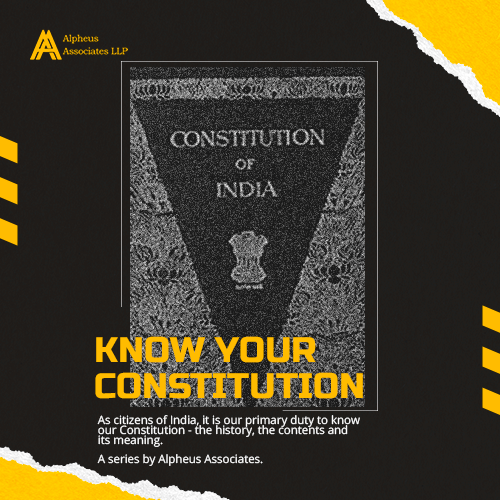
From Framing of the Constitution to the Present Republic Day
When one says that India is a Democratic Republic, what does that actually mean? Do both the words ‘Democratic’ and ‘Republic’ have same meaning? The answer is a big ‘No’. When we say that a State is Democratic, it means that the governance of the State is done by the people, as the leader of the government is elected through public Elections. And when we say that a State is Republic, it means that the head of the State is also elected. For India, the Prime Minister and The President are elected by election process. Thus, we celebrate Republic Day on the day when we enforced the Constitution in India. Constitution of India acts a guide which enables us to know the best forms and ways to govern the country and the people of India.
The very fact that the Constitution of the Indian Republic is the product not of a political revolution but of the research and deliberations of a body of eminent representatives of the people, who sought to improve upon the existing system of administration, makes a retrospect of the constitutional development indispensable for a proper understanding of our Constitution. Before our Constitution came into force in 1950, India was administered by the British under the Government of India Act, which the English had passed in 1958. At that time, the administration of the country was not only unitary, but rigidly centralized. There was no separation of functions, and all the authorities for the governance of India vested in the Governor-General in Council who was responsible to the Secretary of the State. The control of the Secretary of the State over the Indian administration was absolute. The entire machinery of the administration was bureaucratic, totally unconcerned about the public opinion in India. But this scenario was not there to last a lifetime, and all these things changed after India became independent on 15th August, 1947.
The independence of India in August 1947 brought a new ray of hope in the minds of the fellow Indians as the Governors and the Governor-General lost their extraordinary powers of legislation. The Crown also lost its right to veto and so the Governor-General could not reserve any bill for the signification of His Majesty’s pleasure. This was the beginning of a new era in the India’s modern history. This was the time when India, through its appointed representatives, was going to declare herself to be a democratic republic. This was the beginning of the Drafting of the Constitution of India.
The Indian Constitution is in stark contrast to the Government of India Act. Our Constitution has the President as the head of the State, who is appointed indirectly by the people’s representatives. Though being the head of the State, he is a nominal one, and cannot act without the advice of the Council of his Ministers headed by the Prime Minister, who is a directly elected candidate by the People of India. The Legislative, as this wing is called, functions completely independent from the Judiciary and the Executive. Our Constitution also has the Supremacy of the Judiciary, which was absent during the British rule. All these stark points of distinction were only possible due to the wise counsel and efforts of the learned Drafting Committee.
Drafting of a Constitution for such a huge and diverse country like India was not an easy task. The new Indian dominion which then got separated from its present neighbor Pakistan was already recovering from the shackles of Partition violence. But the task of Constitution drafting was very well carried out by the Drafting Committee appointed by the Constituent Assembly at that time. This Committee includes all the well-known Indian scholars who had the reputation of studying various Constitutions of different countries. The Advisor of the Drafting Committee was one of such persons who had this command and thus the Indian Constitution could see articles and provisions borrowed from various provisions. Some of the provisions in the present Constitution were the result of the past pacts between the leaders and the freedom fighters from time to time. The fundamental rights of the person that are guaranteed by our Constitution, which was the most debated topic in the Constitutional Assembly debates, were given shape as the whole world, and even India, was recovering from the plight of the World War II. The United Nations had explained after the World War what the inalienable rights of the person are, and how a State must take efforts to ensure those inalienable rights to its citizens. The Indian Constitution provides remedies in case the State has infringed the rights of the individual.
Our Indian Constitution has completed 71 successful years after it was enforced on 26th January 1950. Everyone has faced challenges for interpreting and implementing the Constitution, but despite those challenges, we continue to be strong and ready to take up any new challenges. Our country today is captured with the lot of troubles. But it is rightly said by one the members of the Drafting Committee of the Indian Constitution, ‘A constitution is as strong as the people who implement and interpret it’. It only means that even if the best of the Constitutions is drafted for any country, it would fail if the people who implement and interpret it are not strong and proper. But in contrast a weakly drafted Constitution will live on for long times if the people implementing and interpreting it are strong and proper. Thankfully for India, we have a balance of both the strong Constitution, and strong and proper people who have time and again proved that they have implemented and interpreted the Constitution in a proper way. From the times when it was initially drafted, to the times of the dark phases of Emergency, and to the present times of the Republic day in today’s age, we have come a long way being a Republic.
